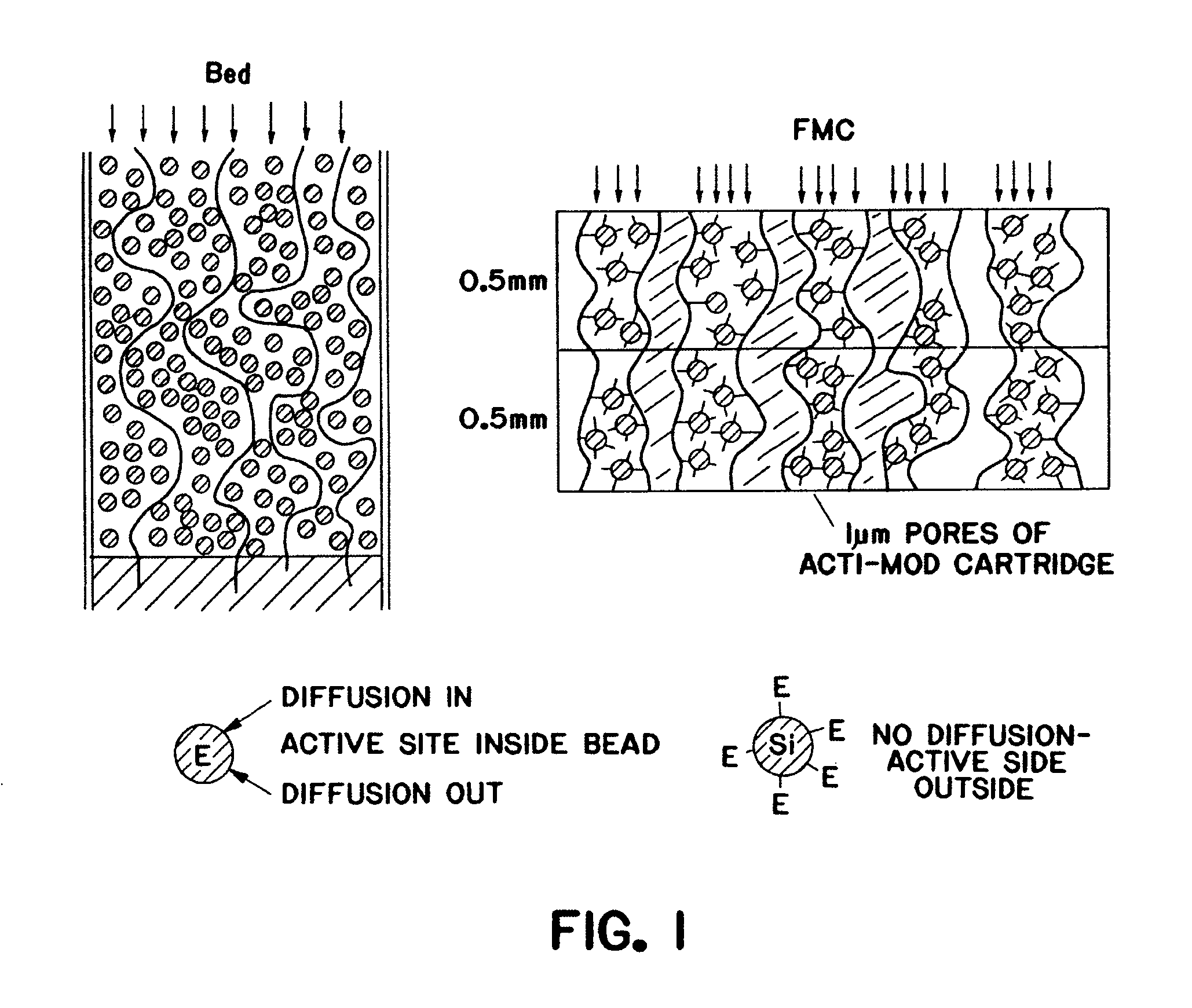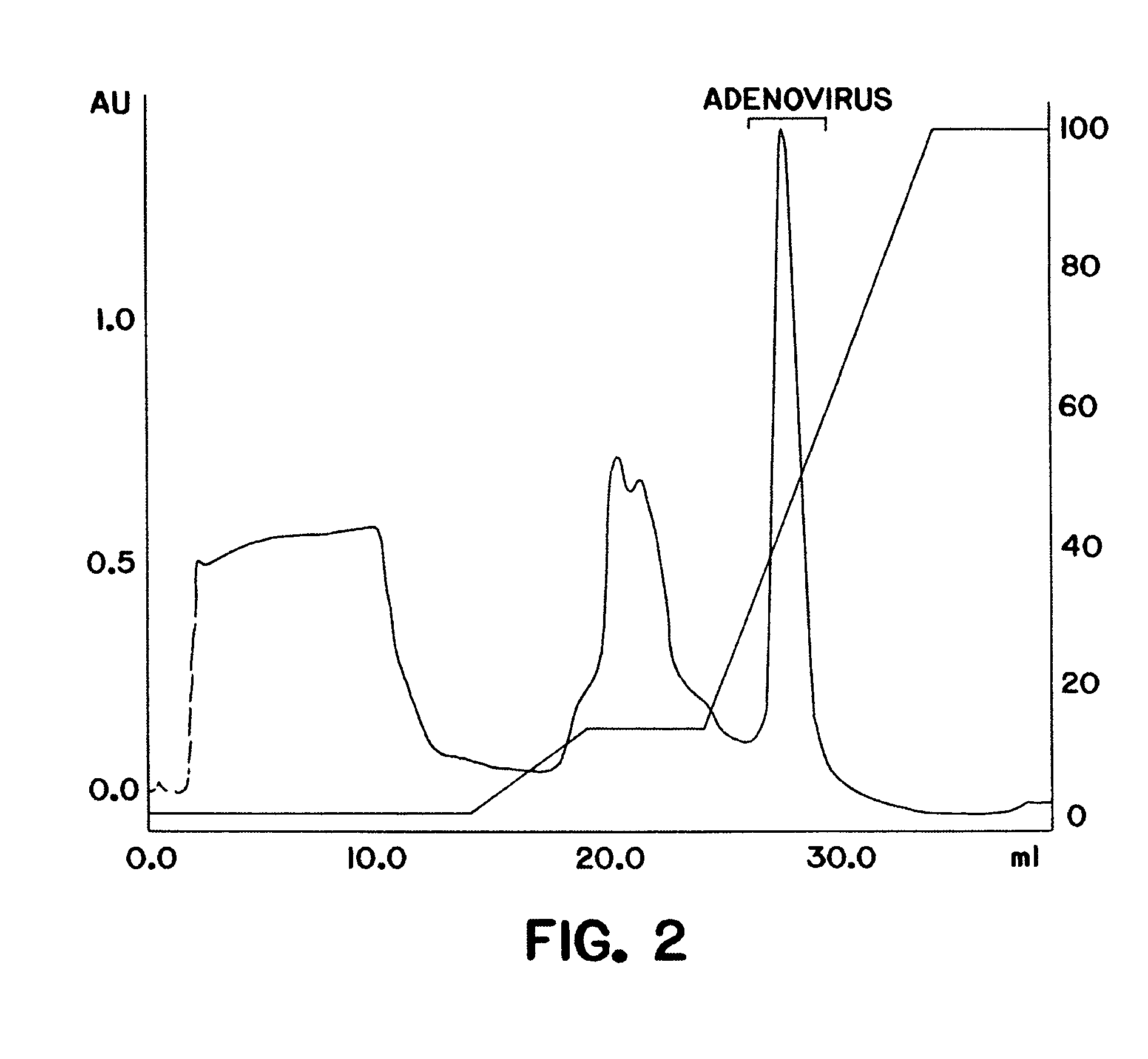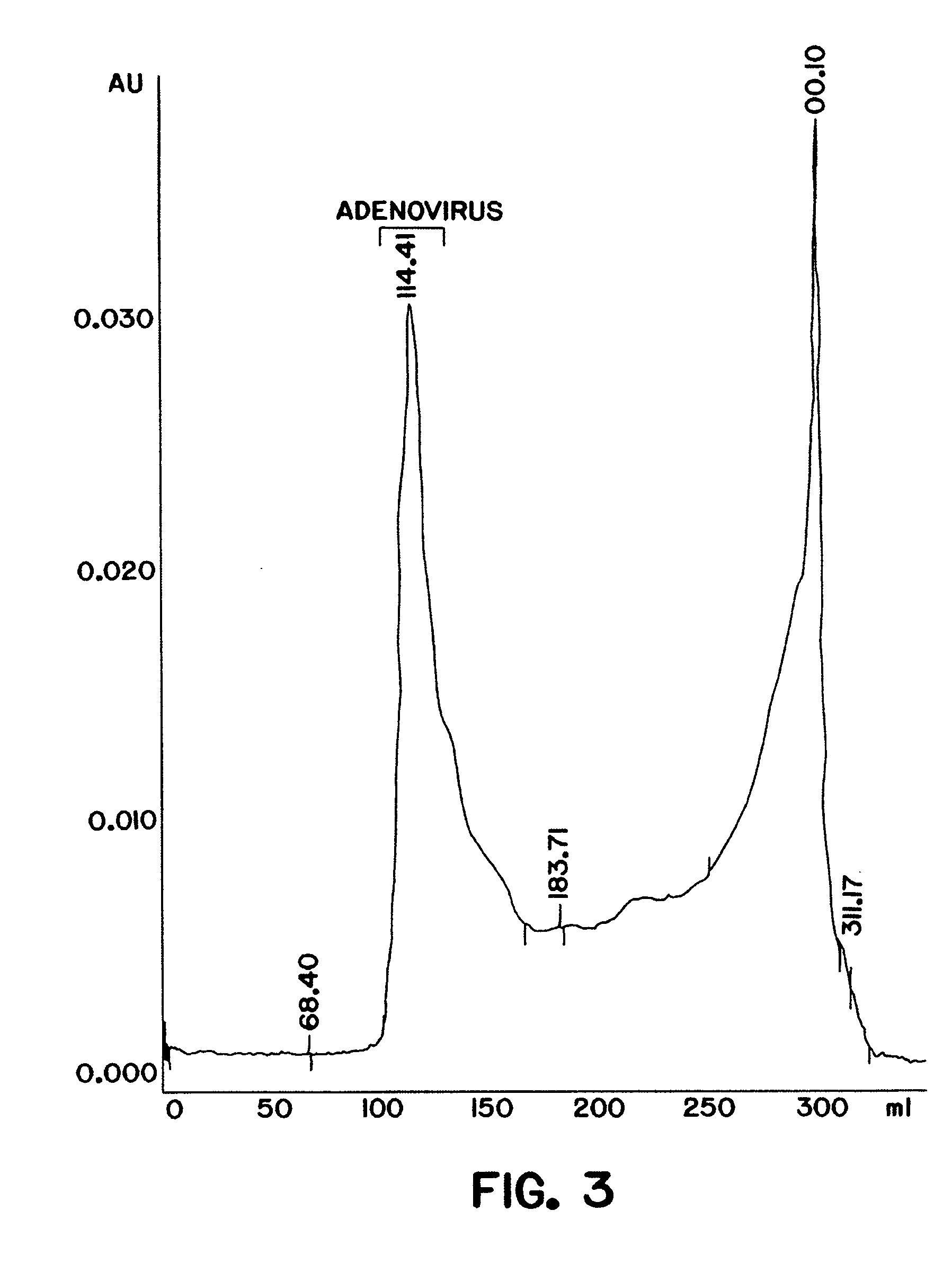Purification of adenovirus and AAV
a technology of adenovirus and purification, applied in the field of purification, can solve the problems of reducing the expression of transgenes, increasing the possibility of insertional mutagenesis upon integration into the cell genome, and increasing the number of adenoviruses
- Summary
- Abstract
- Description
- Claims
- Application Information
AI Technical Summary
Benefits of technology
Problems solved by technology
Method used
Image
Examples
example 1
Extraction of Adenovirus from 293 Cells
[0090] A. Extraction of Adenovirus from Cells
[0091] The human embryonal cell line (293) was used to propagate adenovirus. Virus-infected cells were incubated until the cell monolayer exhibited extensive cytopathic effects (CPE). Usual infection time was 48-60 hours. The cells were harvested into phosphate-buffered saline (PBS) and collected by centrifugation at 1000×g. Cell pellets were frozen at −80° C. for further use or were resuspended in PBS containing 0.1 % Tween-80, 10% glycerol, 2 mM MgCl2 and 50 μM ZnCl2. Following resuspension the cells were lysed using a Microfluidiser (Model HC5000, Microfluidics, Newton, Mass.) at 1000 psi and the lysate was incubated with benzonase (2500 units benzonase® / 108 cells) for 1 hour at room temperature. To remove cellular debris, the lysate was clarified by passing it through glass wool (without vacuum) or by vacuum filtration through 3.0 μm glass fiber filters (MicroFiltration Systems #C300A090C, Sie...
example 2
Chromatographic Purification of Adenovirus
[0098] Column resins were tested for their separation characteristics using a Pharmacia FPLC.
Methods
1. DEAE Chromatography
[0099] A. Adenovirus
[0100] A DEAE MemSep® 1010 HP (Millipore) column (5 ml) was equilibrated with phosphate buffered saline (PBS) (1.5 mM KH2P04, 150 mM NaCl, 5 mM Na2HP04 pH 7.5) containing 10% glycerol, 0.05% Tween-80, and 50 μM ZnCl2. Clarified lysate from 293 cells infected with adenovirus as prepared in Example 1 was applied at a flow rate of 5 ml / min to the pre-equilibrated column (in PBS, 10% glycerol, 0.05% Tween-80, 2 mM MgCl2, 50 μM ZnCl2). The column was washed with 10 mM Na2 HP04, 100 mM NaCl, 100 mM KCl, and a linear gradient (100 mM−1 M) of KCl and NaCl in 10 mM Na2 HP04 pH 7.5, 10% glycerol, 0.05% Tween-80 and 50 μM ZnCl2 was applied to the resin at a flow rate of 5 ml / min. Bound proteins were eluted from the resin and collected in 5 ml fractions. Each fraction was monitored for a) adenoviral DNA an...
example 3
Hydrophobic Chromatography
Methods
[0110] Four different types of hydrophobic resins were tested for their ability to remove contaminants from the adenovirus preparations of Example 2: BioRad Macroprep® columns (butyl and methyl) and Tosohaus® 650 M, 65 μm (phenyl and ether). Adenovirus was applied to each hydrophobic resin in 10 mM sodium phosphate buffer, pH 7.5 containing 2 M NaCl. Bound proteins were eluted from the resin using 0.15 mM KH2 P04, 15 mM NaCl, 0.5 mM Na2 HP04 pH 7.5.
Results
[0111] SDS-PAGE analysis of the flow-through and eluted fractions showed that there was little separation of the adenovirus from other cellular components using these resins.
PUM
| Property | Measurement | Unit |
|---|---|---|
| Fraction | aaaaa | aaaaa |
| Pore size | aaaaa | aaaaa |
| Pore size | aaaaa | aaaaa |
Abstract
Description
Claims
Application Information
 Login to View More
Login to View More - R&D
- Intellectual Property
- Life Sciences
- Materials
- Tech Scout
- Unparalleled Data Quality
- Higher Quality Content
- 60% Fewer Hallucinations
Browse by: Latest US Patents, China's latest patents, Technical Efficacy Thesaurus, Application Domain, Technology Topic, Popular Technical Reports.
© 2025 PatSnap. All rights reserved.Legal|Privacy policy|Modern Slavery Act Transparency Statement|Sitemap|About US| Contact US: help@patsnap.com



